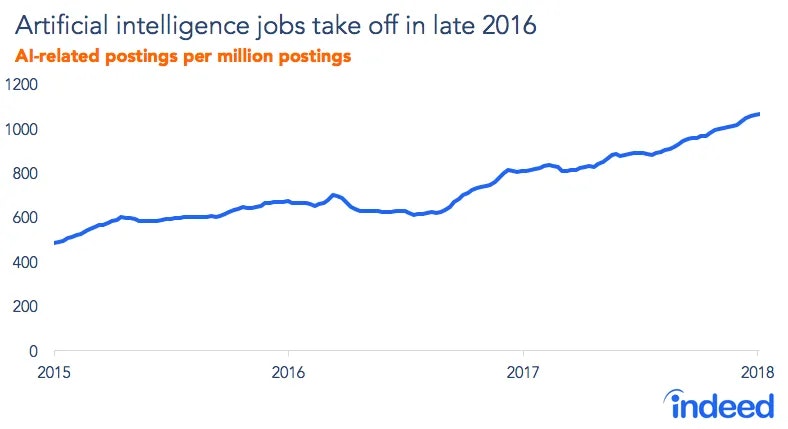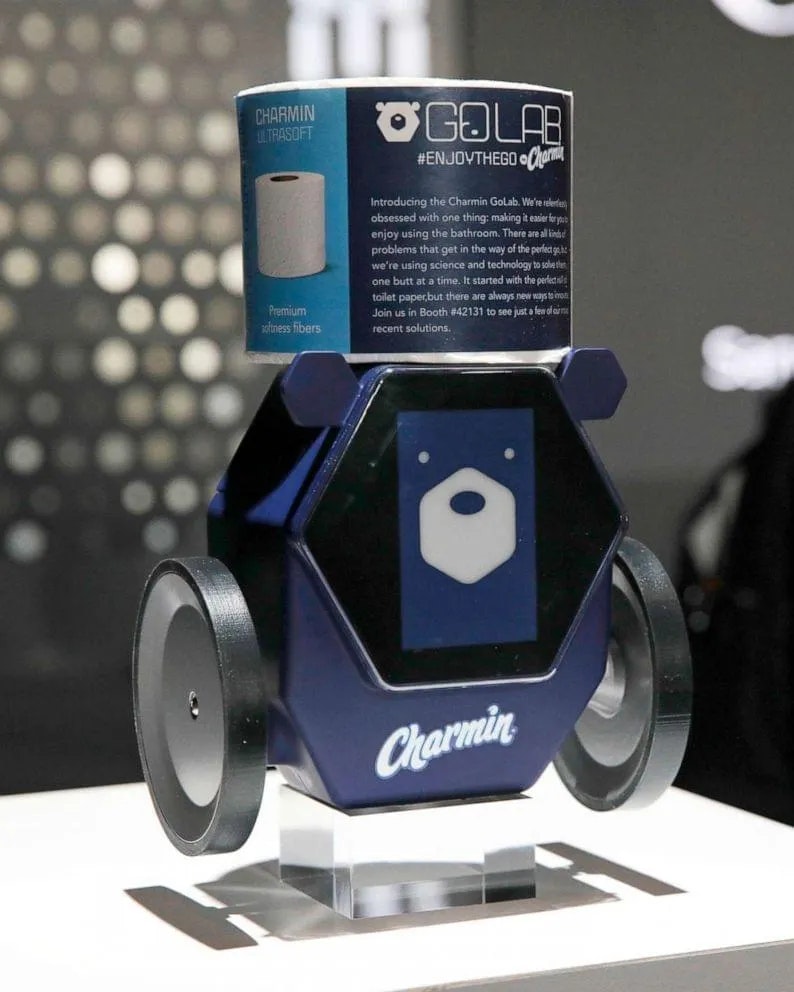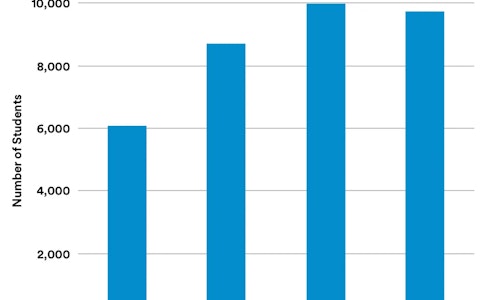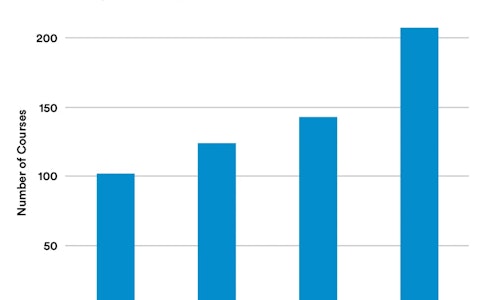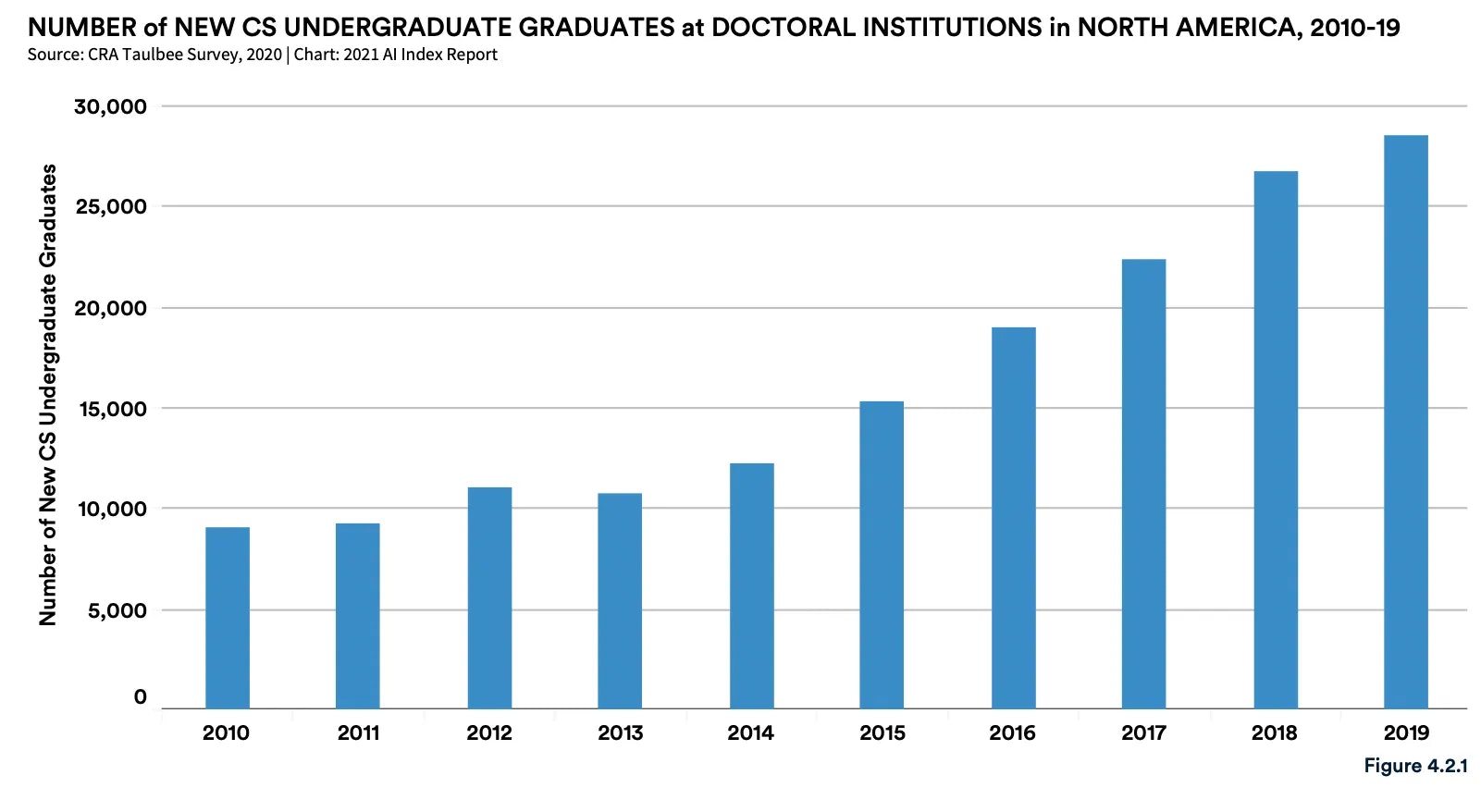What educational paths are out there?
Undergraduate
Bachelor’s Degrees
Students looking to study AI as part of a Bachelor of Arts (BA) or Bachelor of Science (BS) course of study have options when it comes to picking a major. While most instruction in artificial intelligence and machine learning is still taking place through AI or ML specializations added onto traditional computer science majors, standalone AI and ML majors are becoming increasingly popular. So which is right for you? Luckily, the choice isn’t as crucial as you might think: the two share remarkably similar curricula.
With some exceptions, bachelor’s degrees are designed for students who have aptitude in a particular subject, but little or no previous post-secondary educational experience. This means that regardless of whether you choose to major in AI or CS with an AI specialization you can expect to take foundational courses in math, statistics (e.g. Multivariable Calculus, Linear Algebra, Probability), and computer science (e.g. Computing Systems I&II, Principles of Functional Programming, Database Systems, Principles of Software Engineering), as well as AI-specific introductory courses and electives (e.g. Introduction to Artificial Intelligence, Deep Learning, Robotics).
Many programs also require a capstone project to be completed during your final year of study. Before that you can also expect to take a course in AI ethics and policy, a writing and communication course, as well as distributional requirements in the social sciences and humanities. Often, undergrads will also have the opportunity to assist their professors in cutting-edge research. And while a bachelor’s in artificial intelligence is an intense course of study, you might be able to complete it from your couch: increasingly, schools are allowing some or all of this coursework to be completed online.
Graduating from one of these bachelor’s programs generally means you can enter the job market immediately, working as a junior artificial intelligence or machine learning engineer, data scientist, or software developer. Or you might be recruited for a corporate training program, where you would rotate through different roles to gain experience and a better understanding of what might interest you. Another option would be to enter graduate study right out of undergrad.
Though there is significant demand in the labor market for AI professionals, there is still substantial competition for roles. Accordingly, it’s important to pay attention to student and alumni outcomes when researching schools. It’s also a good idea to choose a program that offers robust career services and active alumni networks, which are invaluable assets whether you are just starting your career or looking to move up.
Other important things to take note of when researching schools are cost and financial aid options. Tuition for public universities will generally be lower, especially if you are a resident and entitled to pay in-state tuition. Oftentimes, online programs will also have lower tuition. But regardless of a school’s tuition, there are many financial aid options available to you, from private scholarships and grants; to federal grants, scholarships, loans, and work-study programs; to private loans. In fact, over 80% of US undergrads receive some form of financial aid, so you’re in good company if you’re seeking help paying for school. The most important thing is to inform yourself about your options — and utilize private loans, which often come with exorbitant interest rates, only as a last resort.
Of course, before paying for school, completing a course of study, and entering the AI workforce, you’ll have to apply to a school and be admitted. While the process is similar for most schools, each has its own particular requirements and deadlines, so as you are researching programs you’ll want to take note of these details. To save you time, we’ve assembled pertinent information about stellar programs on our Undergraduate Degree Application Details page.
When applying to a program, you can generally expect to be evaluated for admission based on all or a mix of the following:
your achievement in high school
your standardized testing scores (including for tests like TOEFL if you are not an English native speaker)
the interests, character, and ambition demonstrated by your extracurricular activities
recommendations written by your high school teachers and guidance counselors,
your written answers to essay prompt
An interview with an alumnus, alumna, or admissions officer
For AI programs, you will very likely need to show aptitude or readiness for the kinds of advanced math and statistics you will be required to learn, either through prior study in high school, AP tests, or through math boot camps, like AI Plus’ Foundations of Artificial Intelligence, or massive online open courses (MOOCs) like Imperial College London’s Mathematics for Machine Learning. Most programs will also require you to pay an application fee. But again, schools vary. Some schools are more focused on curating learning communities, and so might more heavily weigh essay responses that help them get to know you. Others might have temporarily or permanently lifted standardized testing requirements in light of COVID-19. Still others might have waived their fee requirements. When in doubt about what might be required, check!
Graduate
If you’re seeking a substantial course of study to help you advance in the world of AI and ML, and you already hold a bachelor’s in computer science, artificial intelligence, another STEM field, or even the social sciences and humanities, then a master’s and PhD program in computer science, artificial intelligence, or machine learning is a great option. Graduate study offers more advanced coursework, increased access to professors, and the opportunity to specialize in a subfield of AI or machine learning. For all PhD programs and many master’s programs, you will also be expected to undertake original research culminating in a dissertation, thesis, or capstone project — research that will often play an important role in recruiting. But should you opt for a master’s program or go directly into a PhD? We’ll lay out some of the differences so that you can make an informed decision.
Master’s Degrees
Your experience in a master’s program in artificial intelligence or machine learning will largely depend on the knowledge you bring into it. If you are coming in with a bachelor’s degree from a field far removed from computer science, AI, or machine learning, you will likely need to complete what is often called a “conversion master’s” — or at least conversion courses — which will furnish you with the skills and expertise that would be expected of somebody with a bachelor’s degree in computer science, AI, or machine learning. In a conversion master’s, you will have some opportunity at the end of the program to begin more specialized study. If you already have fundamental knowledge in the field, you will be able to both deepen this knowledge and begin specializing from the get-go.
But why get a master’s in the first place? If you already have experience in the field, the primary reason is practical: certain lucrative positions (senior AI or ML engineer roles, for example) in Big Tech and other leading companies are usually so competitive that you can really only get an interview if you have a master’s degree. Another reason people enter a master’s program is that they hope to eventually start doctoral studies but don’t yet have sufficient credentials to be accepted to their choice of programs. Whatever the reason, it’s important to be realistic about the financial impact.
While a master’s might open up more lucrative salaries or further study, you should consider how the costs associated with going back to school and two or more years out of the workforce (and so two or more years foregoing promotions) might impact your lifetime earnings. It’s very possible that the higher earning potential that comes with an advanced degree in AI or ML will more than make up for any temporary financial setbacks, but you’ll be happier with your choice in the long run if you make it with eyes open to the financial realities.
Another option to consider is if an online or part-time program would allow you to keep working, and thus avoid the considerable financial impact of studying full-time in person. While places in such programs are competitive, you might also try to gain admission to one of a handful of partially- or fully-funded master’s programs in computer science that allow you to pursue artificial intelligence while receiving a tuition remission and/or earning a modest stipend for serving as a research or teaching assistant.
While much of the application process for artificial intelligence and machine learning master’s degrees are similar to the process for bachelor’s degrees, there are some key differences. In addition to an online application (and usually an application fee), you will generally be required to submit a personal statement detailing your experience, research interests, and reason for applying to a particular school. You will also need to submit up to three recommendations, usually from undergraduate professors or professional acquaintances, as well as a resume or CV, transcripts from all post-secondary study, and standardized test scores.
The scores most commonly accepted are from the Graduate Record Examinations (GRE), which comprise an analytical writing section, two sections each testing your verbal reasoning and quantitative reasoning, and usually also two ungraded sections used for test calibration and research. As with the SATs, some schools may have temporarily or permanently waived the testing requirement. Lastly, though they are usually not required, it’s a good idea to inform schools of any publications of original research in leading journals or presentations at notable conferences: these will certainly support your application.
Doctoral Degrees
If you want to conduct research in academia, at a think tank, or in industry, you will need to earn a PhD in artificial intelligence or machine learning. The percentage of graduating CS PhDs who specialize in artificial intelligence and machine learning has grown dramatically over the last ten years: Stanford’s AI Index reports that such students made up over 20% of all CS PhD students in 2019, up 8.6% from 2010 and dwarfing all other CS specializations. At the same time, pursuing a PhD in artificial intelligence remains an exclusive club. With the rigorous requirements and lengthy time-to-degree (generally 4-5 years), it’s no surprise that the same survey counted less than 300 new PhD students specializing in AI or ML graduating from American computer science departments in 2019.
In the US, students showing promise are frequently admitted to PhD programs without a master’s degree, with the understanding that they will complete a master’s course of study (and the requisite comprehensive exams) before being allowed to begin doctoral research (a process usually known as “qualifying”). As with bachelor’s and master’s programs, if you want to specialize in a subfield of artificial intelligence or machine learning, you can do so within a traditional computer science department or in a PhD program that specializes in AI — the key is to choose a program that has faculty with similar interests to you that will be able to guide you as you progress in your research. When looking into programs, make sure to read individual professors’ work to see if one or several of them might be a good match. Oftentimes, professors will also happily answer your questions or even meet with you if asked over email. It’s also a good way to connect with them and start building a relationship. You can also check our PhD program profiles to get a better idea of where you can pursue your research interests.
While most students still pay for computer science and AI master’s degrees in the US, the majority of PhD programs are fully-funded, meaning that PhD students don’t have to pay tuition or fees for their PhD and the master’s degree(s) they earn along the way, while also receiving a stipend to study and conduct research. If you’re passionate about research, this might seem like a dream come true, but remember that this stipend will be far lower than the salary you would earn in industry.
Increasingly, however, researchers believe that a temporary deferral of a high salary is worth it: while the traditional path for a successful PhD candidate would have them entering academia as a junior professor, potentially after one or more stints as a postdoctoral researcher, increasingly PhD graduates are going into industry, where astronomical compensation awaits. This shift is in part due to the saturation of academic departments: as Stanford’s AI Index explains, the 48% increase in the share of PhDs going into industry between 2010 and 2019 isn’t due to fewer PhDs entering academia so much as “the large increase in PhD output [...] primarily being absorbed by the industry.” But with the exciting research coming out of places like Google’s DeepMind and Meta AI, no teaching requirements, plus the perks that come with working in big tech, you can imagine that many new PhDs are only too happy to enter industry.
Short-Courses: Bootcamps & Executive Education Programs
Maybe you’re looking to get smarter about artificial intelligence and machine learning, but you’re not looking to enter a lengthy (and costly) degree program. Luckily for you, shorter programs that can help almost any education-seeker meet their goals are becoming increasingly available. For those with existing technical skills in mathematics, programming, or software development looking to expand their skill-set, many universities and other education providers are now offering machine learning bootcamps and online certificate programs that will allow you to draw on this experience as you begin to develop technical expertise in AI and machine learning. While these courses usually won’t award college credit or formal degrees, they are often part-time and online, allowing you the flexibility to continue working as you upskill.
Options also exist for those without technical experience just looking to get a better handle on the AI landscape and how AI technologies can help their business. Whether you’re a C-suite executive looking to build out your company’s AI footprint, a senior manager looking to better lead your technical teams, or a mid-career professional looking to improve your career prospects for the future, executive education programs can help you understand the past, present, and future of artificial intelligence and machine learning in your industry, be it business and finance, healthcare, manufacturing, or any of a host of others. As with the more technical programs, these courses will likely be part-time and online, allowing professionals to study on their schedule without disrupting the day-to-day of their business.
While short courses generally cost significantly less than degree programs, there are still many kinds of financial assistance available for both technical and non-technical courses. Many programs offer need-based scholarships, flexible payment plans, or even group discounts. Increasingly, bootcamps are also allowing students to pay for their education only after they have gotten a job with a certain level of compensation. If you are currently employed, you might also check to see if your employer would cover some or all of your educational expenses: many companies offer workers tuition or education reimbursement as part of their employee benefits. As for degree programs, private loans should be your last resort to finance your learning.

